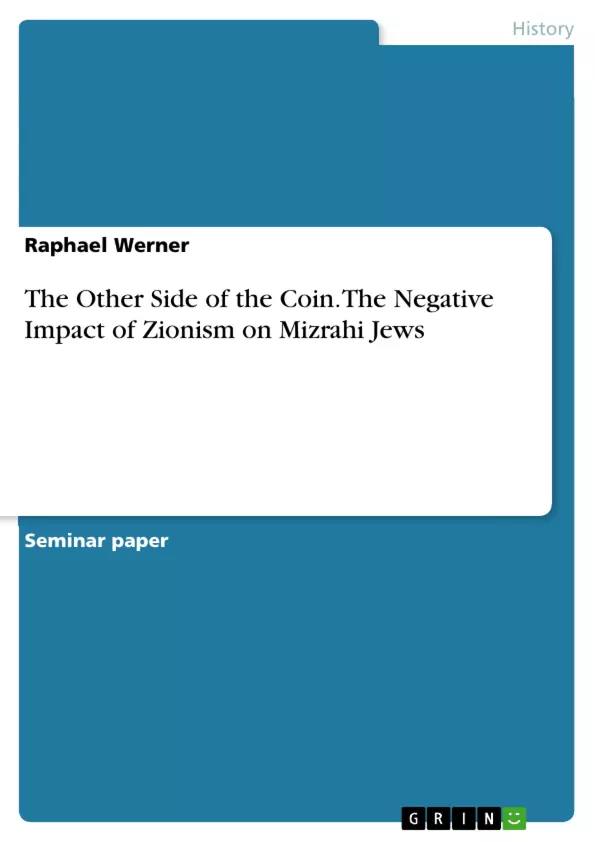The focus of this paper is primarily going to be set on the downsides of Zionism for Oriental Jews who arrived from the 1950s to the 1970s.
Hereby, I claim that the Zionist movement has not been a liberation movement for all Jews, but rather worked in favor of the Ashkenazim. I will support this claim by displaying not only the disadvantages Zionism carried for Mizrahim but also by examining the unequal treatment of the Sephardim which show parallels to colonial oppression.
Inhaltsverzeichnis (Table of Contents)
- Introduction
- Analytical Part
- Definition and Origins of the Mizrahim
- Zionist Ideology
- Arrival and Parallels to Colonialism
- Caught Between Two Opposites: “The Hybrid Identity of the Mizrahim”
- Conclusion
Zielsetzung und Themenschwerpunkte (Objectives and Key Themes)
This paper examines the negative impacts of Zionism on Oriental Jews who arrived in Israel from the 1950s to the 1970s. It argues that the Zionist movement primarily benefited Ashkenazi Jews, while Mizrahim faced discrimination and unequal treatment reminiscent of colonial oppression. The paper explores the historical background of the Mizrahim, analyzes the ideology of Zionism, and highlights the parallels between their arrival in Israel and colonial practices.
- The impact of Zionist ideology on Mizrahi identity and culture
- The historical context and origins of the Mizrahim
- The unequal treatment and discrimination faced by Mizrahim in Israel
- Parallels between Mizrahi arrival and colonial practices
- The implications of Zionism for the diverse Jewish community
Zusammenfassung der Kapitel (Chapter Summaries)
- Introduction: This chapter introduces the topic of Mizrahi identity in Israel, highlighting the pressure to conform to a European-centric Jewish identity and the consequences of assimilation policies for Sephardi immigrants.
- Analytical Part:
- Definition and Origins of the Mizrahim: This section defines the terms "Mizrahim," "Sephardim," and "Oriental/Arab Jews," tracing their origins and historical connections to the Middle East.
- Zionist Ideology: This section examines the Zionist movement's ideology, focusing on its goals of establishing a "one-nation-state" in Palestine and the inherent challenges this posed for Mizrahim. It explores the Zionist ideal of a European Jewish identity and the consequences for those who did not fit this mold.
- Arrival and Parallels to Colonialism: This section examines the arrival of Mizrahim in Israel, highlighting the economic and political motivations behind their immigration and the parallels to colonial practices.
Schlüsselwörter (Keywords)
This paper explores the complex and often overlooked aspects of Mizrahi identity in Israel. Key themes include Zionist ideology, Oriental Jewish history, assimilation policies, cultural discrimination, and the parallels between Mizrahi immigration and colonial practices. The work sheds light on the diverse experiences of Jews in the Middle East and the lasting impact of Zionist policies on the Jewish community.
- Quote paper
- Raphael Werner (Author), 2014, The Other Side of the Coin. The Negative Impact of Zionism on Mizrahi Jews, Munich, GRIN Verlag, https://www.grin.com/document/366565



